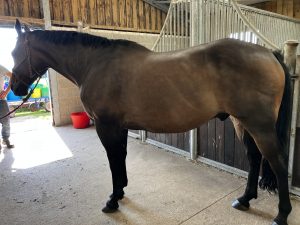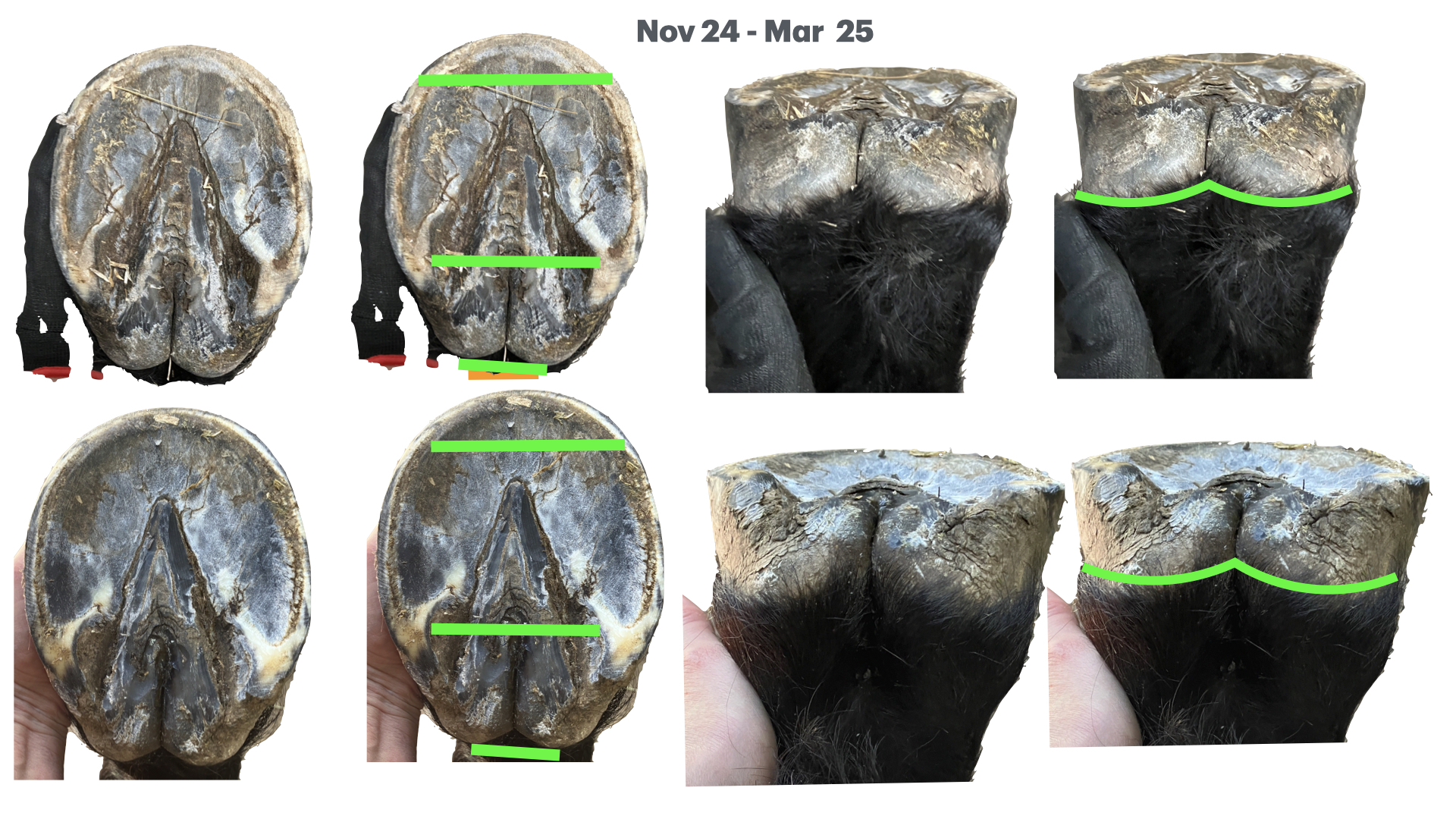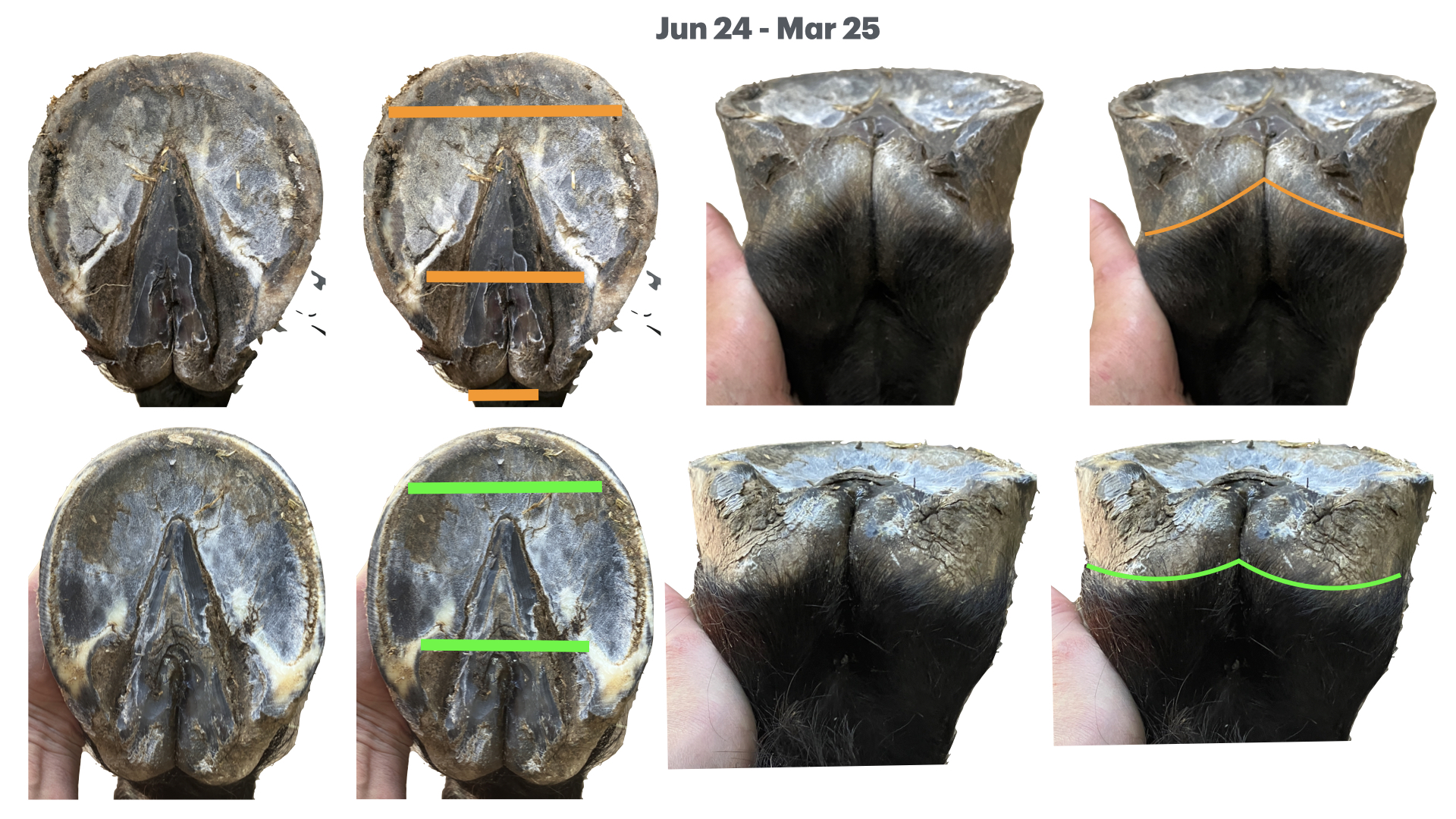Horse Warmblood Gelding
Equine Podiatrist Helen Stowell

Background.
This handsome boy has had historical issues with central sulcus infections in his heels. He came back from a spell on loan with a serious recurrence of the problem. His central sulcus had deep slits and the digital cushion and frog part of his heels was collapsing down through the centre of the foot.
Assessment
To avoid the heel pain he was loading his weight over his toes, and as a result his toe area had widened more so that his heels and frogs. He was grumpy, withdrawn and uncomfortable.
Approach
We trimmed to widen the heel purchase, kept his weak frog slightly passive to the heels and protected his soles at the toe with booted turnout. Delicately trimmed the contracted central sulcus to encourage it to open, and to remove any poor quality material that may cause discomfort. Pads helped to support the collapsing frog and heel area. His central sulci were treated with Hedgewitch products to counter the deep seated infections. He has also had treatments from an excellent bodyworker and in hand work to help him improve how he’s using himself.
Progress
The photos below show the progress with this case, the top row are at the beginning of each and the bottom row is 5 months later.
Jun 24 – Nov 24
The frog has widened, the heel bulbs are less collapsed with better depth of soft tissue. The depth of the slit of the central sulcus infection is also less significant although still very much there. As the toe width has reduced and the heel width increased, the feet went from ‘lightbulb’ shaped to rectangular – with very straight walls through the quarter.

Over the winter, the hoof wall growth slowed, and the heel area continued to widen. The widest part of the foot moved further back so the hoof shape became slightly rounder. The central sulcus, whilst still too deep started to open out.

This is the progress over the course of one hoof capsule’s growth – approximately 9 months, and we’re looking for a continuation of the frog health improving and the heel area regaining strength as it becomes more comfortable.
To see a more complete rehabilitation of this type of foot see this case study over 6 years, where the heel area has completed its development Shod to barefoot transition